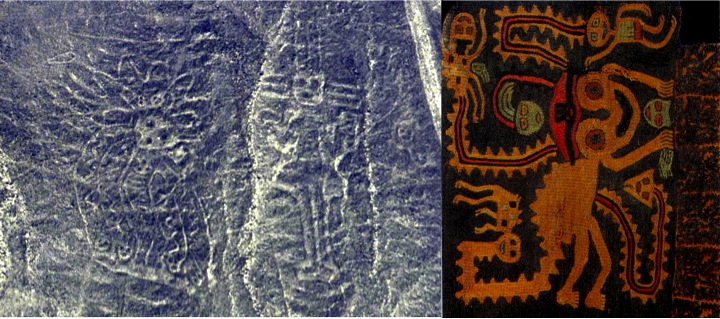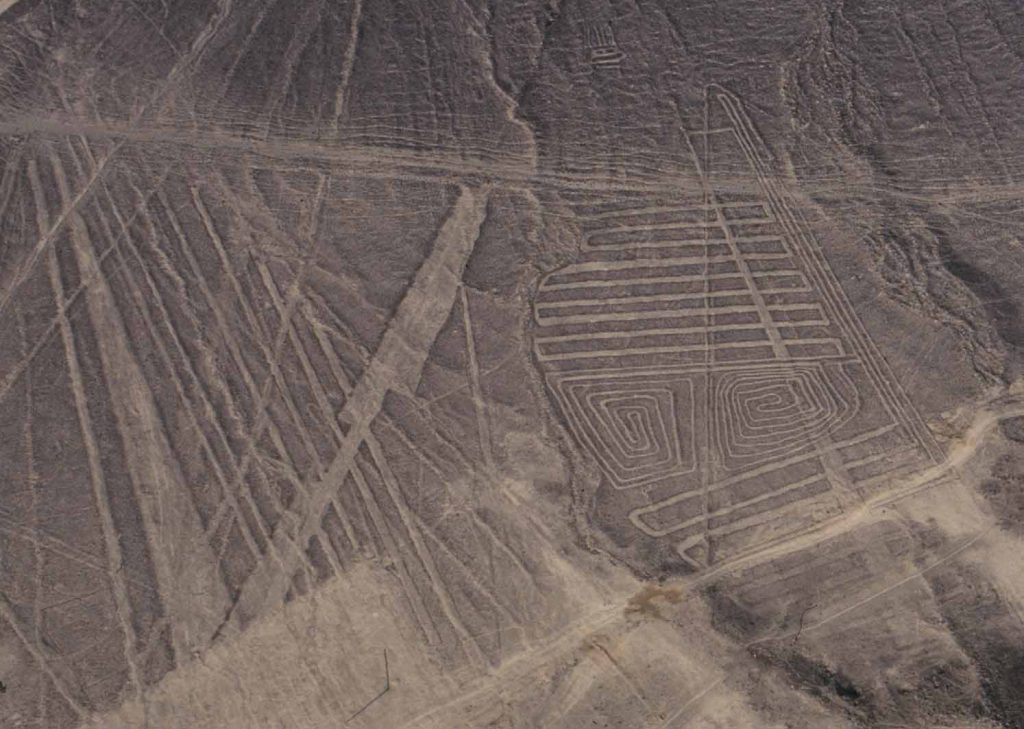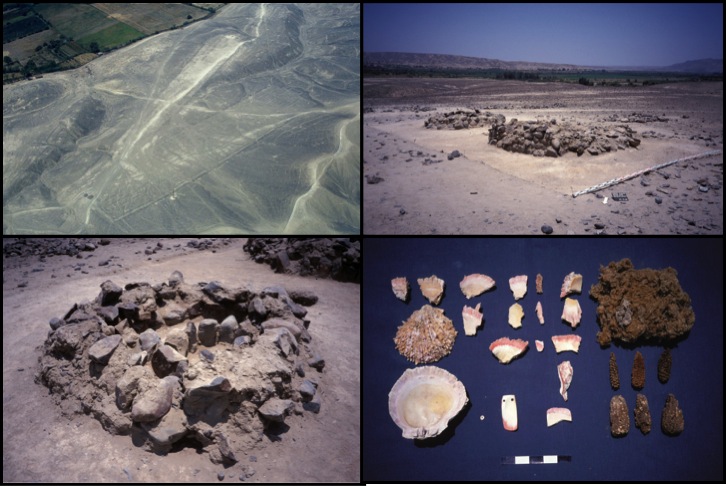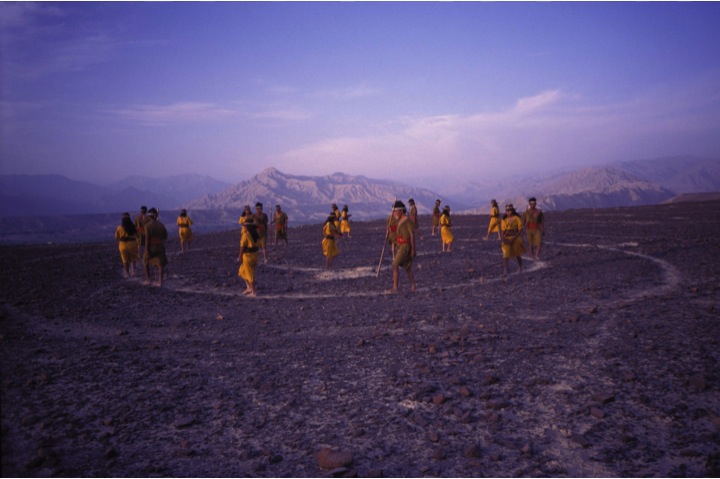In the coastal desert of Nasca and Palpa in Peru, gigantic figures are scored into the ground. The geoglyphs, as they are known, were the subject of archaeological investigation and documentation for many years in an interdisciplinary research project directed by the DAI’s Commission for Archaeology of Non-European Cultures, using the most modern photogrammetric methods.

As part of the project, excavations were carried out on the geoglyphs for the first time. The team exposed stone platforms that were used as sacrificial altars in the Nasca Period (200 BC – 600 AD), supporting the theory that the geoglyphs were associated with water and fertility rituals. On the platforms the remains were found of crops, textiles and mussels as well as worked objects placed there as sacrificial offerings.
Together with the geoglyphs, these small temple buildings and other post pits formed visible marks of a ritual landscape that can be regarded as the sacred sites of the Nasca people.
The research results have been on show since 2018 in the travelling exhibition Nasca. Im Zeichen der Götter (“Signs for the Gods”), currently in Madrid.

Geoglyphs on a valley slope near Palpa (Photo: Markus Reindel, DAI KAAK) 
Remains of ritual platforms and the sacrificial offerings found there (Photo: DAI KAAK) 
Recreation of a procession on a spiral-shaped geoglyph of the Nasca period (Photo: DAI KAAK)